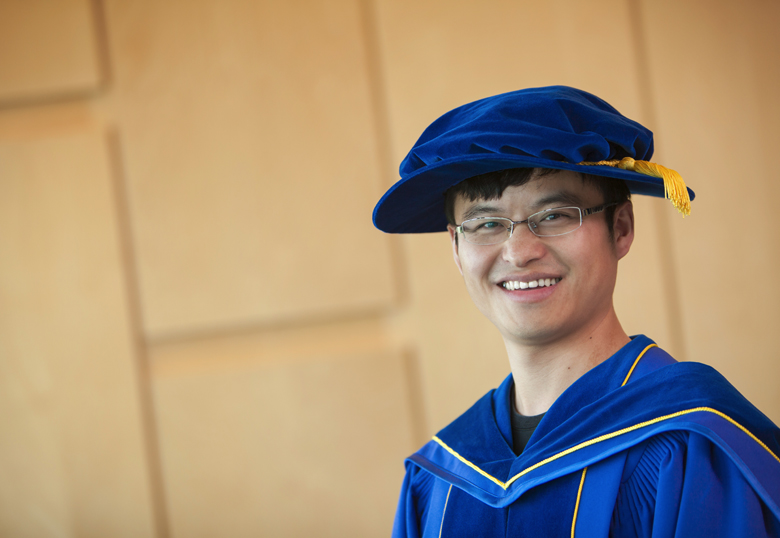A research collaboration between Dr. Bruce McNaughton’s lab at the Canadian Centre for Behavioural Neuroscience at the University of Lethbridge and Dr. Vincent Bonin’s lab at the Neuro-Electronics Research Flanders (NERF, VIB-KU Leuven-imec) in Belgium has provided new insight into how the brain learns about the environment and why the hippocampus, a key part of the brain, is so important in this process.

“This is quite a major breakthrough in understanding and supporting a long-standing theory for which there was virtually no neurophysiological evidence, mostly just behavioural evidence and conjecture,” says McNaughton.
A 2017 study conducted by Dr. Dun Mao (PhD ’17), then a graduate student working in the labs of McNaughton and Bonin, was the first to show that cells in the cerebral neocortex, specifically the retrosplenial cortex, look very much like ‘place cells’ in the hippocampus. Place cells are involved in navigation and learning. However, the researchers didn’t know whether the retrosplenial cortex developed activity patterns on its own or relied on instructions from the hippocampus.

The study, Hippocampus-dependent emergence of spatial sequence coding in retrosplenial cortex, has been published in PNAS (Proceedings of the National Academy of Sciences of the United States of America).
The idea of the study stemmed from the long-held hippocampal indexing theory. Neuroscientists have proposed the indexing theory to explain how the hippocampus interacts with the cortex. Since the brain’s cortex has many cells, distant regions of the cortex don’t communicate strongly with each other. However, each part of the cortex is able to store information in its own domain.
Indexing theory proposes that, each time an animal has a unique experience, the hippocampus creates a unique pattern of neural activity that it sends to the rest of the cortex. That unique pattern acts like a context code and is stored in different regions of the cortex, along with the raw data the regions are responsible for encoding, such as shapes, sounds and motion. If the hippocampus recreates that index, it will simultaneously appear in all the cortical regions involved at the time, thereby retrieving the individual parts of the experience to create an integrated memory. Although this theory was initially proposed more than 30 years ago, direct neurophysiological evidence has been lacking.
In the current study, Mao damaged very precise locations in the hippocampus in mice so that the hippocampus was no longer functional but the cortex remained intact. He then used 2-photon calcium imaging to track the activity of neurons in the cortex as the mice navigated and learned about the environment. This allowed him to witness how retrosplenial activity develops and to determine the role of the hippocampus in that learning.
“In those mice, we found that there was a loss of this place-cell like activity in the cortex, thereby strongly supporting the conclusion that the cortex gets its spatial code, or its index code, from the hippocampus itself,” says McNaughton.
“Most compelling are the strength and specificity of the effects,” says Bonin. “The effects are stunning. With an intact hippocampus, activity in the retrosplenial cortex is precise and orderly. In the absence of it, it’s a complete mess, as if the animal had never been exposed to the environment. Having such a strong phenomenon to rely on will be helpful in basic studies but also in studies of brain disorders and neurodegeneration.”
The results pave the way for further studies to determine how general the phenomenon is and determine how and if indexing activity helps the cortex retrieve stored information.
“We need to know the circuit mechanisms,” says McNaughton. “We need to know how those particular indexing cells are connected to the other cells in those regions of the cortex. Very detailed neuroscience needs to be done in order to get a complete picture of how this memory- or knowledge-creating system actually works at the level of the nuts and bolts of the brain.”
McNaughton looks forward to these future studies as new high-tech tools should be available in the next five years that will allow for deeper exploration of the brain, as well as techniques that will allow for simultaneous recording of the activity of tens of thousands of brain cells, rather than the few hundred currently possible.
